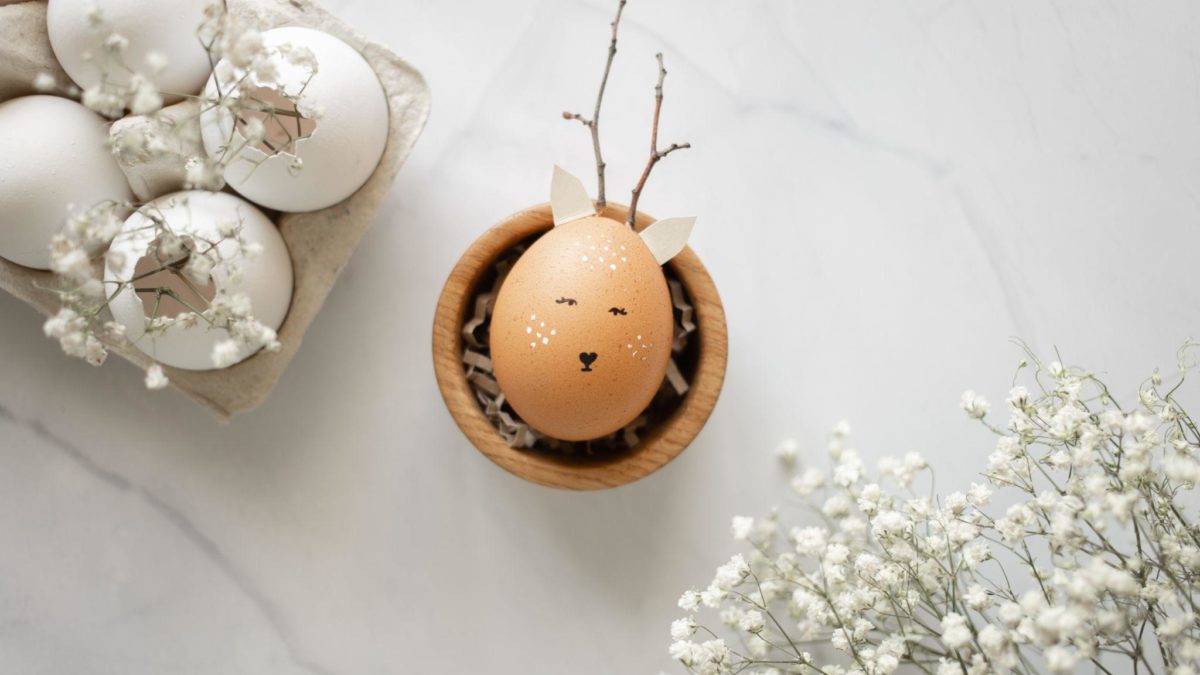Most people think of eggshells as something you throw away, but did you know that you can use them to grow indoor plants? Eggshells are packed with nutrients that your plants need. Using them for your plants is an excellent method to put these nutrients to use.
There are two ways to use eggshells for indoor plants.
- To start a new indoor plant from seeds.
- To use them for the growth of your indoor plants.
1. Eggshells As Indoor Plants
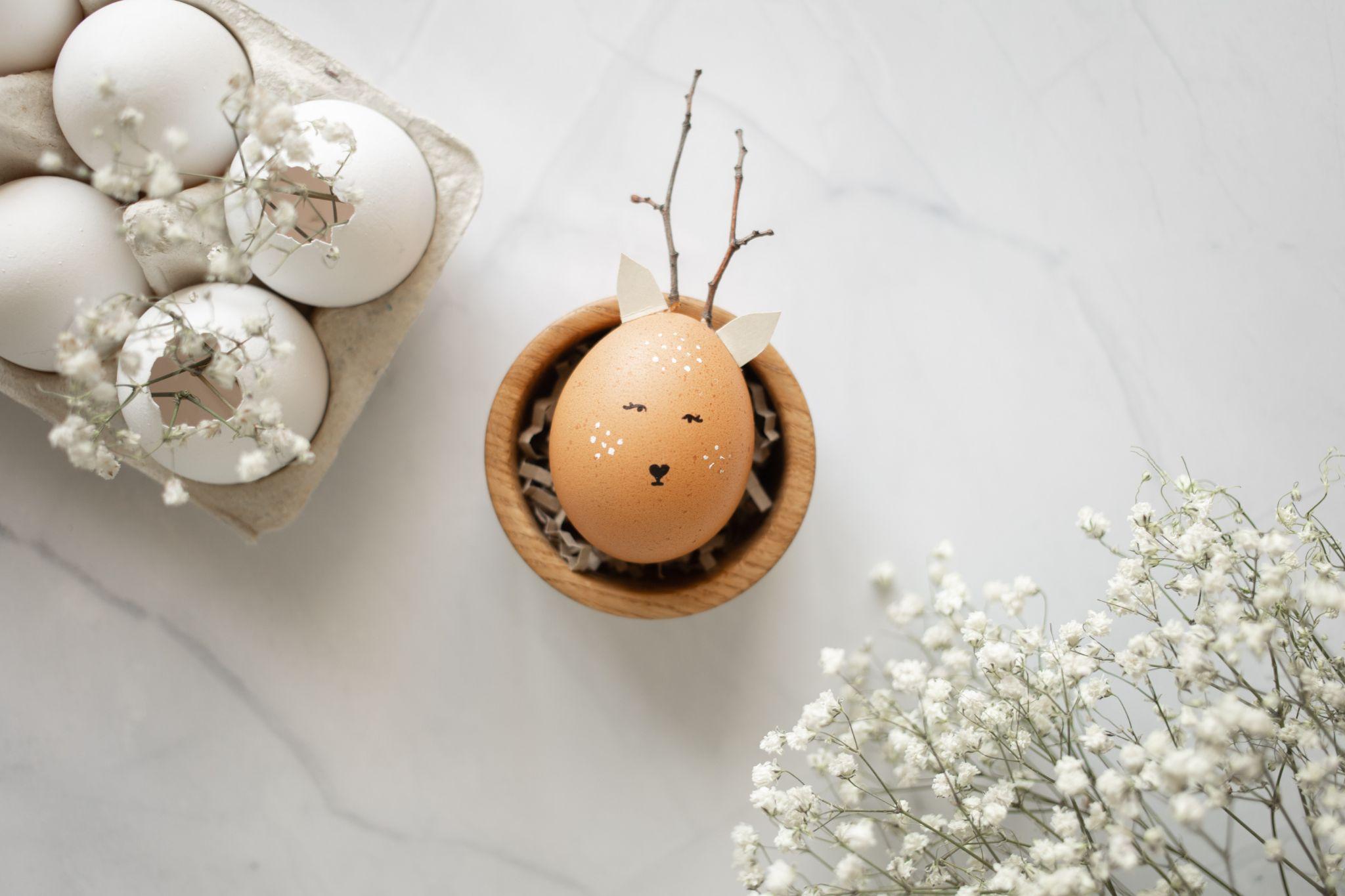
Credit: Pexels
If you have eggshells from making breakfast, don’t throw them away! Instead, use them for growing new indoor plants. Here are some steps on how to use eggshells to grow indoor plants from seeds:
- Crack open the eggshells.
- Use the halves as little pots.
- Fill the eggshells with potting mix and plant your seeds.
- Once the seedlings are big enough, you can transplant them into larger pots.
So, next time you have some eggshells, don’t throw them away! Put them to good use and grow some beautiful indoor plants!
2. Eggshells For Indoor Plants
Indoor plants are a great way to spruce up your home and purify the air. But did you know that you can also use eggshells as a natural fertilizer?
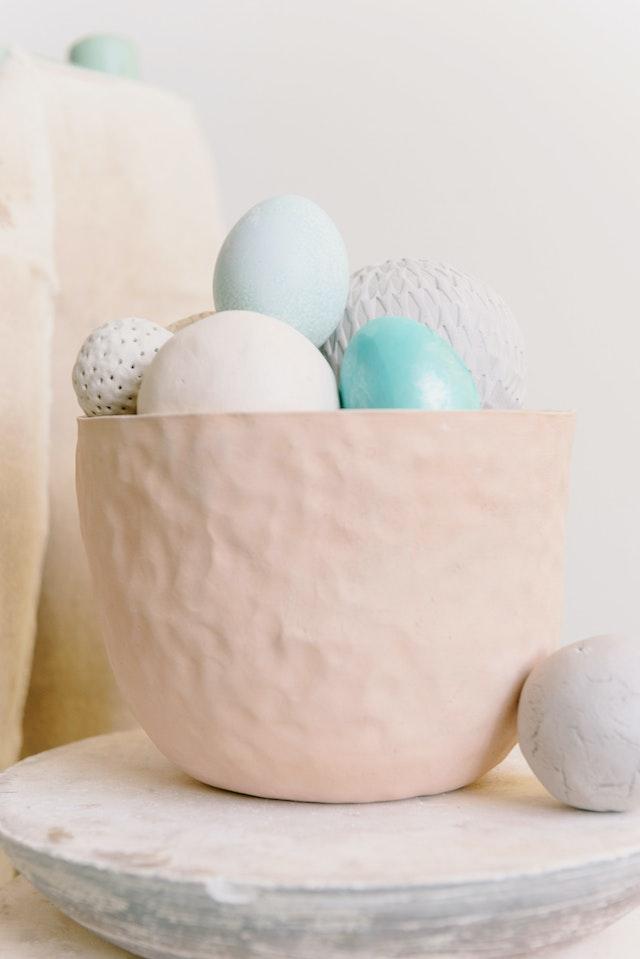
Credit: Pexels
Eggshells are a great source of calcium for plants. It helps plants to build strong cell walls and prevents blossom end rot. They can also help to deter pests. There are a few things to keep in mind when using eggshells with your plants.
- First, make sure that you wash the eggshells before using them. This will remove any bacteria or contaminants that might be present.
- Second, it’s best to use eggshells that have been dried for a few days before crushing them. This will make them easier to crush and will also help to prevent mold from forming.
Here’s how to use eggshells for your indoor plants:
- Crush the eggshells into small pieces.
- Sprinkle the eggshells around the base of your plant.
- You can also add eggshells to your plants’ potting soil.
So there you have it! Using eggshells for your indoor plants is a great way to give them a boost of nutrients and deter pests.
The Benefits Of Using Eggshells For Indoor Plants
There are many benefits of using eggshells for indoor plants.
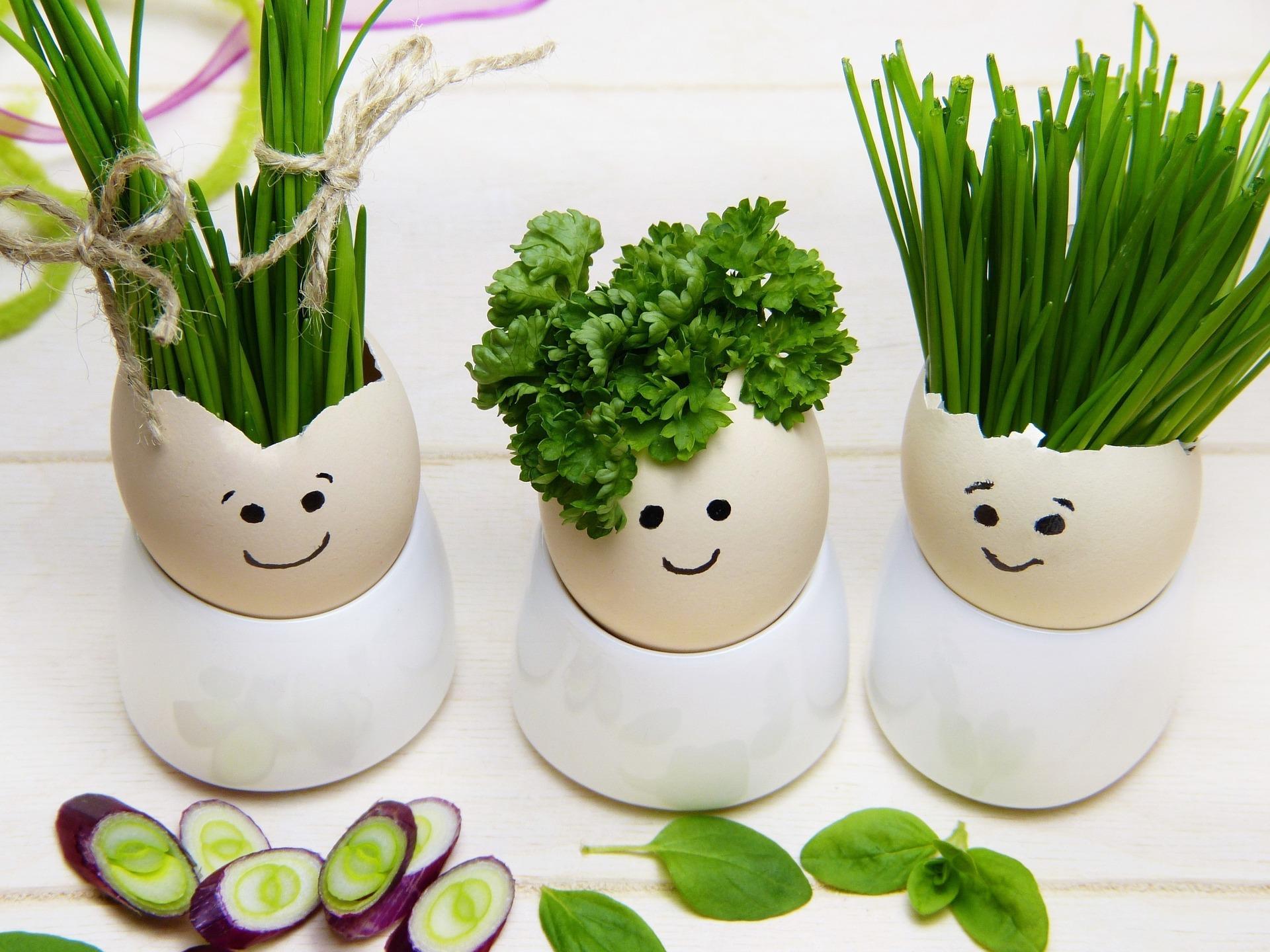
Credit: Pixabay
1. Excellent Source Of Calcium:
Eggshells are a great way to give your plants a boost of calcium. Calcium is an important nutrient for plants, and eggshells are an excellent source of it. You can also use eggshells to make a calcium-rich planting mix. Just mix crushed eggshells with some potting mix or compost. This mix is great for plants that need extra calcium, such as tomatoes, peppers, and roses.
2. Deter Pests:
If you have problems with slugs or other pests eating your plants, try using eggshells as a natural deterrent. Just scatter some eggshells around the base of the plant. The sharp edges will deter pests from coming near your plant!
3. Natural Fertilizer:
Eggshells can also be used as a natural fertilizer for your plants. Just grind up the shells and sprinkle them around the base of the plant. The eggshells will release nutrients into the soil as they decompose.
4. Improves Health:
Eggshells are an easy and inexpensive way to improve the health of your indoor plants. Give them a try and see for yourself!
How To Use Eggshells With Indoor Plants
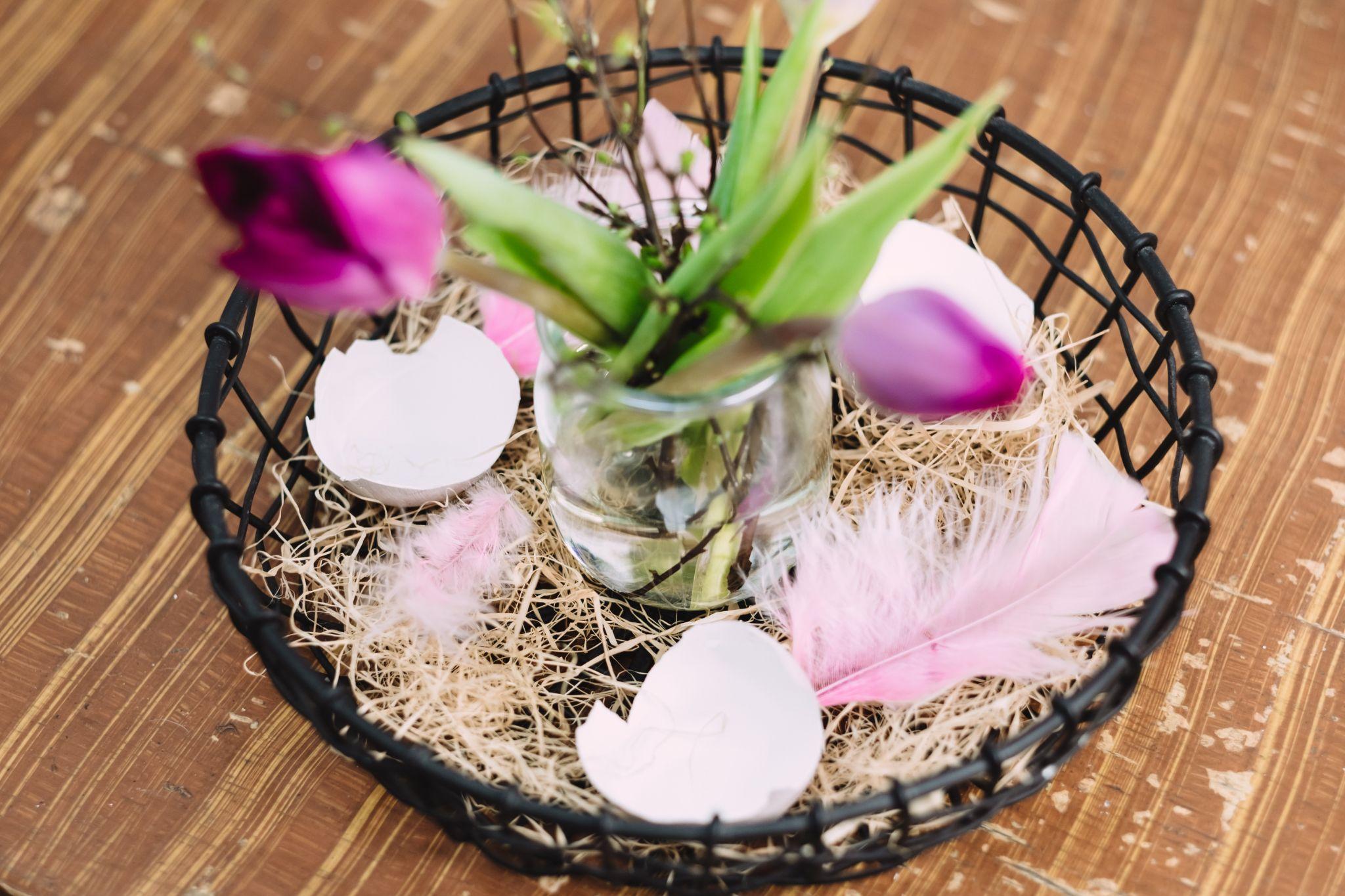
Credit: Unsplash
Eggshells can be used with both outdoor and indoor plants. So if you have indoor plants that could use a little boost of calcium, don’t hesitate to give them a try!
- You can use them as fertilizer for your indoor plants. To use eggshells as fertilizer, simply crush them up and sprinkle them around the base of your plants. Eggshells take a long time to break down, so be patient.
- You can also add them to the soil when you’re potting or repotting a plant. Eggshells will gradually break down and release calcium into the soil, which will be absorbed by the roots of the plant.
- You can also add them to your compost pile.
- Eggshells can be used to start plants from cuttings. Just take a cutting from your plant, and dip the end in some water. Then, stick the cutting into an eggshell filled with potting mix. The eggshell will help to keep the cutting moist until it roots.
If you have a lot of eggshells, you can store them in a container and crush them as needed. Do you have any tips for using eggshells with indoor plants? Share them in the comments below!
The Best Plants To Use Eggshells With
Eggshells are a great source of calcium for plants. Here are some of the best plants to use eggshells with:
1. Tomatoes:
Eggshells help to prevent blossom end rot, a condition caused by a lack of calcium. Simply crush a few eggshells and sprinkle them around the base of your tomato plants.
2. Peppers:
Like tomatoes, peppers can also benefit from the extra calcium provided by eggshells. Crush eggshells and sprinkle them around the base of your pepper plants.
3. Roses:
Eggshells can help to deter pests like aphids and slugs. Place crushed eggshells around the base of your rose bushes and it will help in deterring pests and preventing diseases.
4. Cabbage:
Cabbage is another plant that can benefit from the extra calcium provided by eggshells. Sprinkle crushed eggshells around the base of your cabbage plants.
How Often To Use Eggshells With Indoor Plants
It is best to use eggshells with indoor plants every week. This will ensure that your plants get the nutrients they need and that the eggshells do not start to build up in the soil.
If you find that the eggshells are starting to build up, you can reduce the frequency with which you use them.
What Type Of Eggshells To Use With Indoor Plants
There are many different types of eggshells that you can use for your indoor plants. It all depends on what type of plant you have and what type of eggshell you have available.
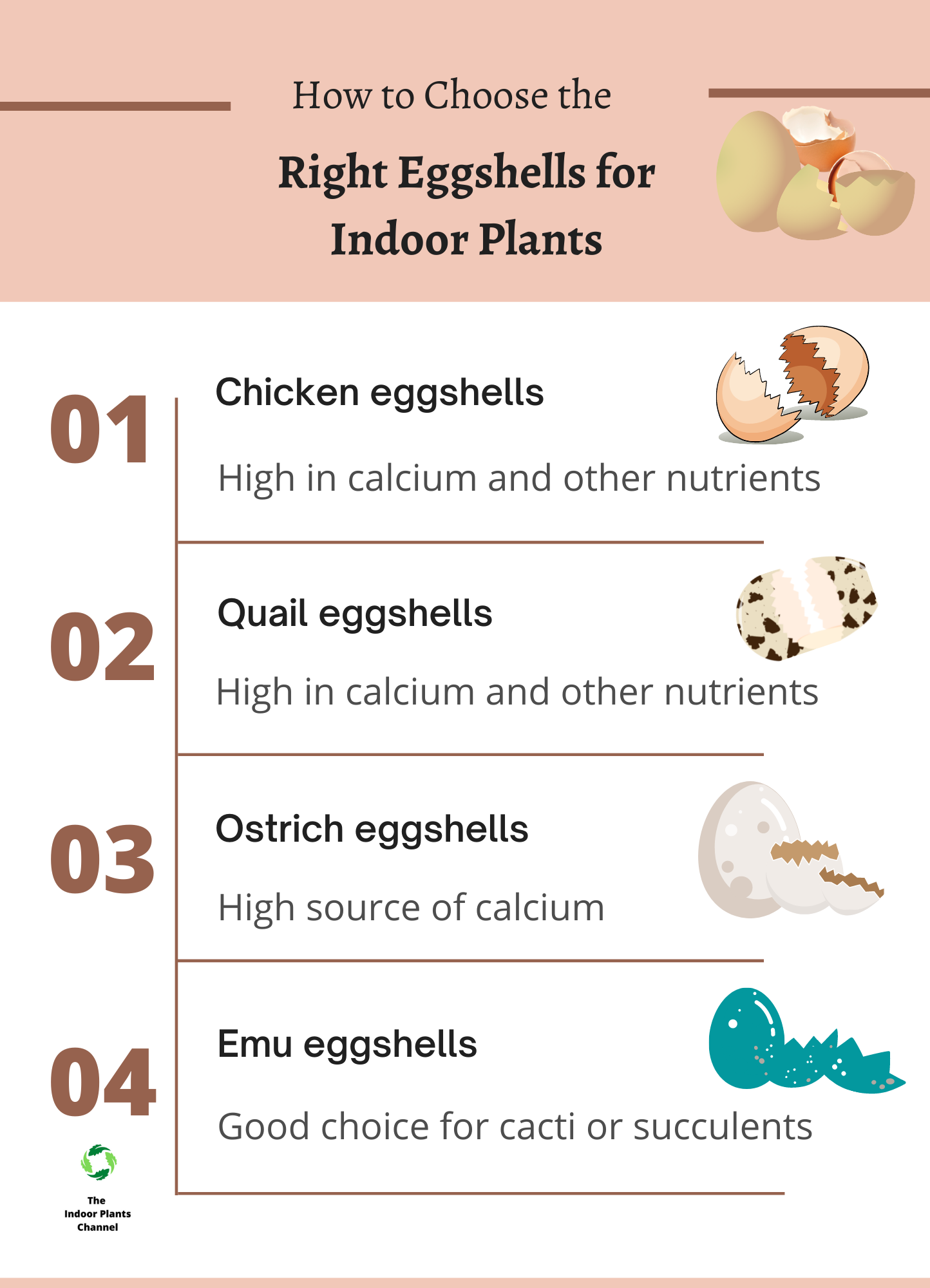
Some common types of eggshells that can be used for indoor plants include chicken, quail, ostrich, and emu. Each type of eggshell has its benefits and drawbacks, so it’s important to choose the right one for your plant.
1. Chicken Eggshells
Chicken eggshells are a good choice for most plants because they are high in calcium and other nutrients. They are also fairly easy to find and usually free if you have your own chickens. However, chicken eggshells can be quite sharp, so you’ll need to be careful when handling them.
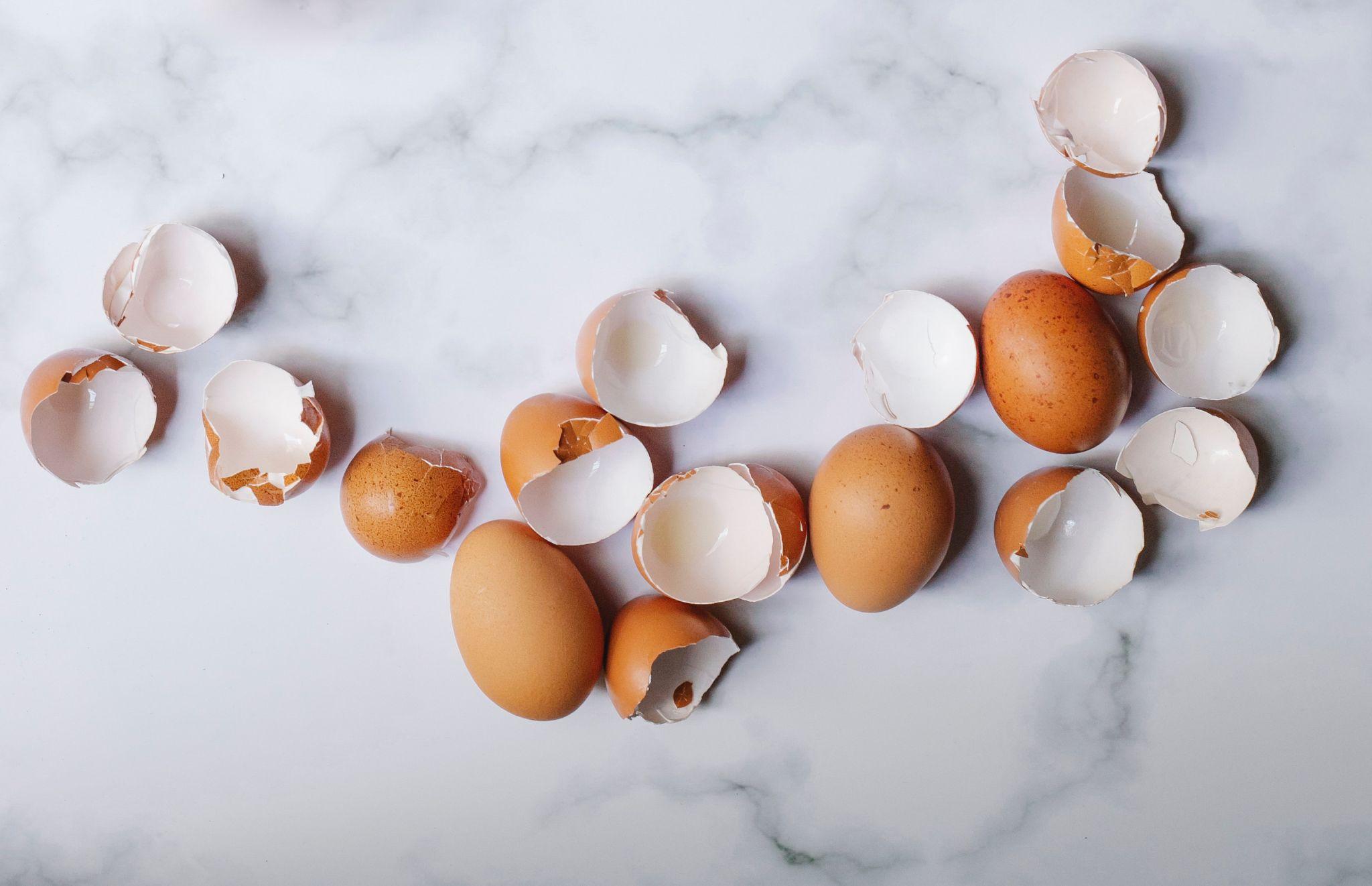
Credit: Pexels
2. Quail Eggshells
Quail eggshells are another good option for indoor plants. They are similar to chicken eggshells in terms of nutrients and ease of use, but they are slightly smaller and less sharp.
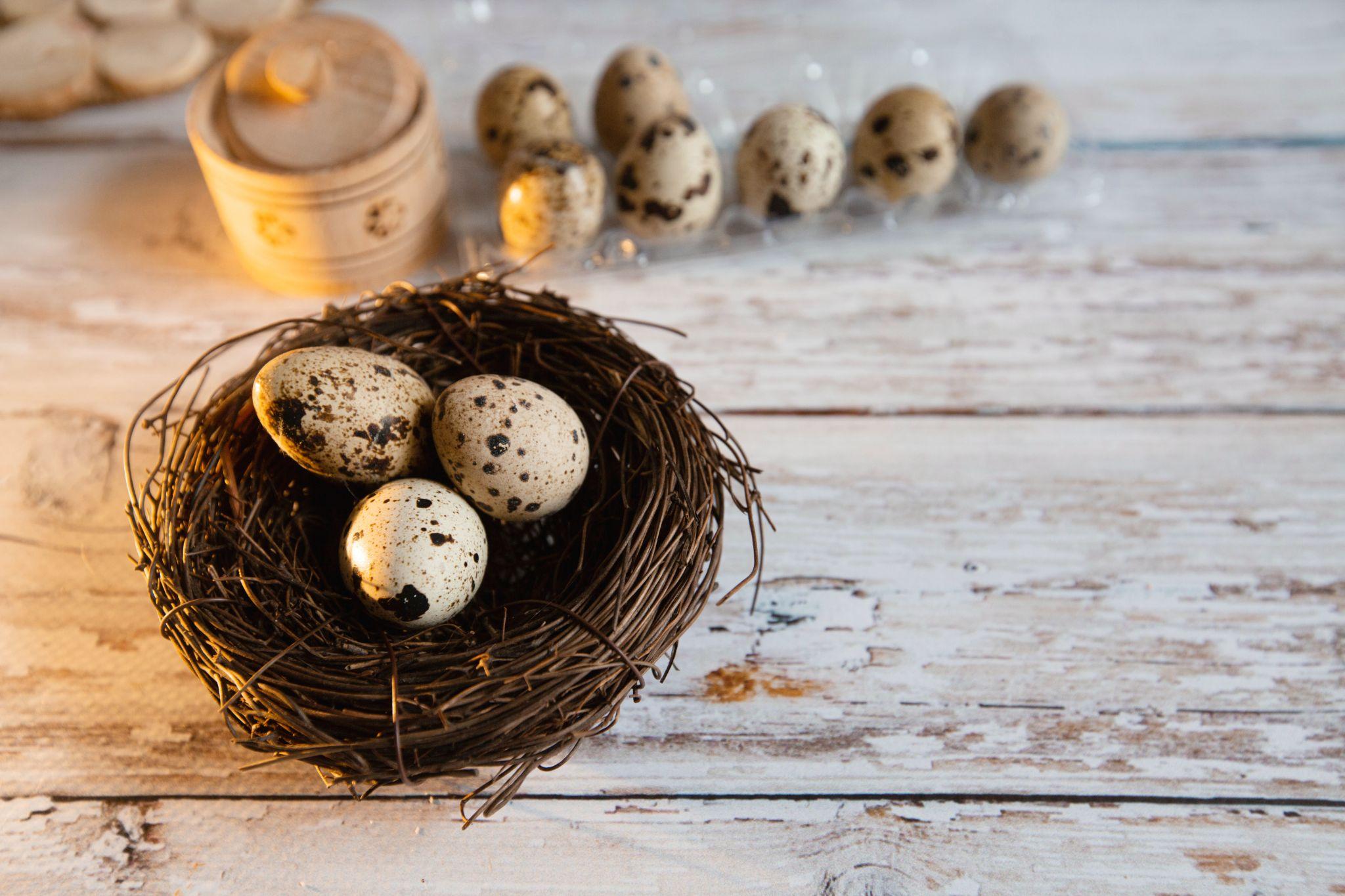
Credit: Pexels
3. Ostrich Eggshells
Ostrich eggshells are the largest type of eggshells, and they can be a good choice for plants that need a lot of calcium. However, they can be difficult to find and are often quite expensive.
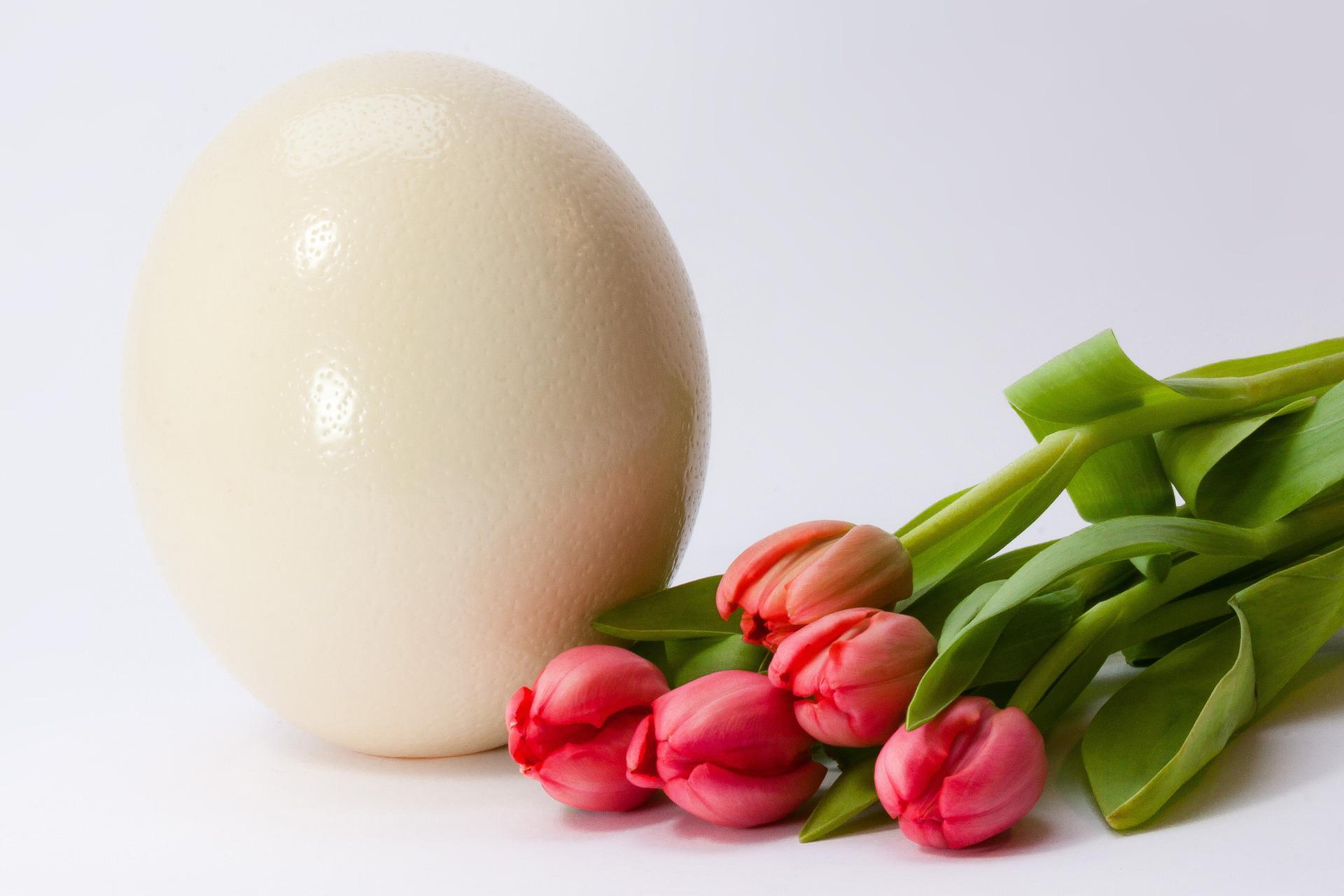
Credit: Pixabay
4. Emu Eggshells
Emu eggshells are the heaviest and strongest type of eggshells. They are a good choice for plants that need extra support, such as cacti or succulents. However, they can be difficult to find and are often quite expensive.
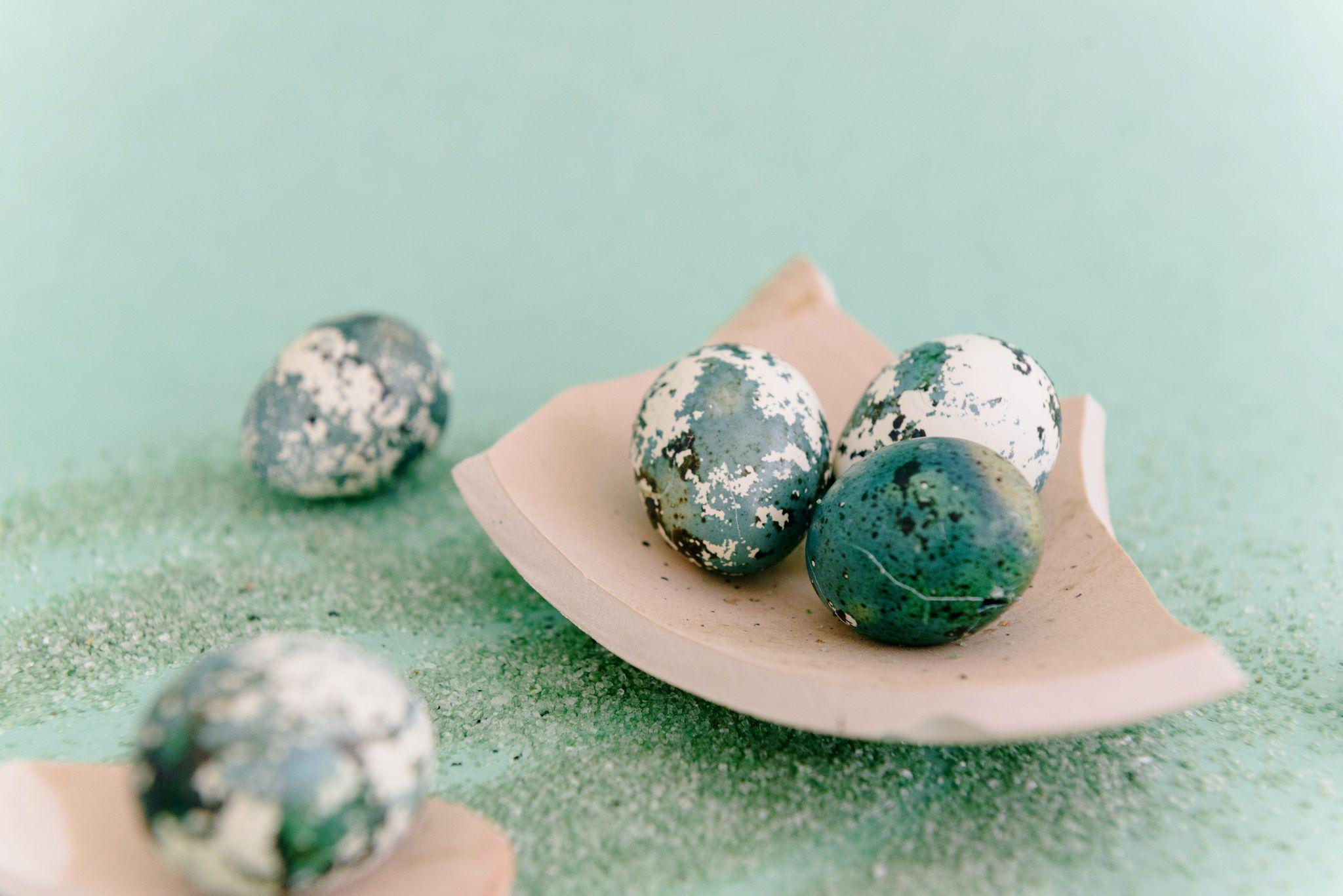
Credit: Pexels
No matter what type of eggshell you choose, be sure to wash it well before using it. Eggshells can harbor bacteria that can be harmful to your plants, so it’s important to make sure they are clean before using them.
How To Prepare Eggshells For Use With Indoor Plants
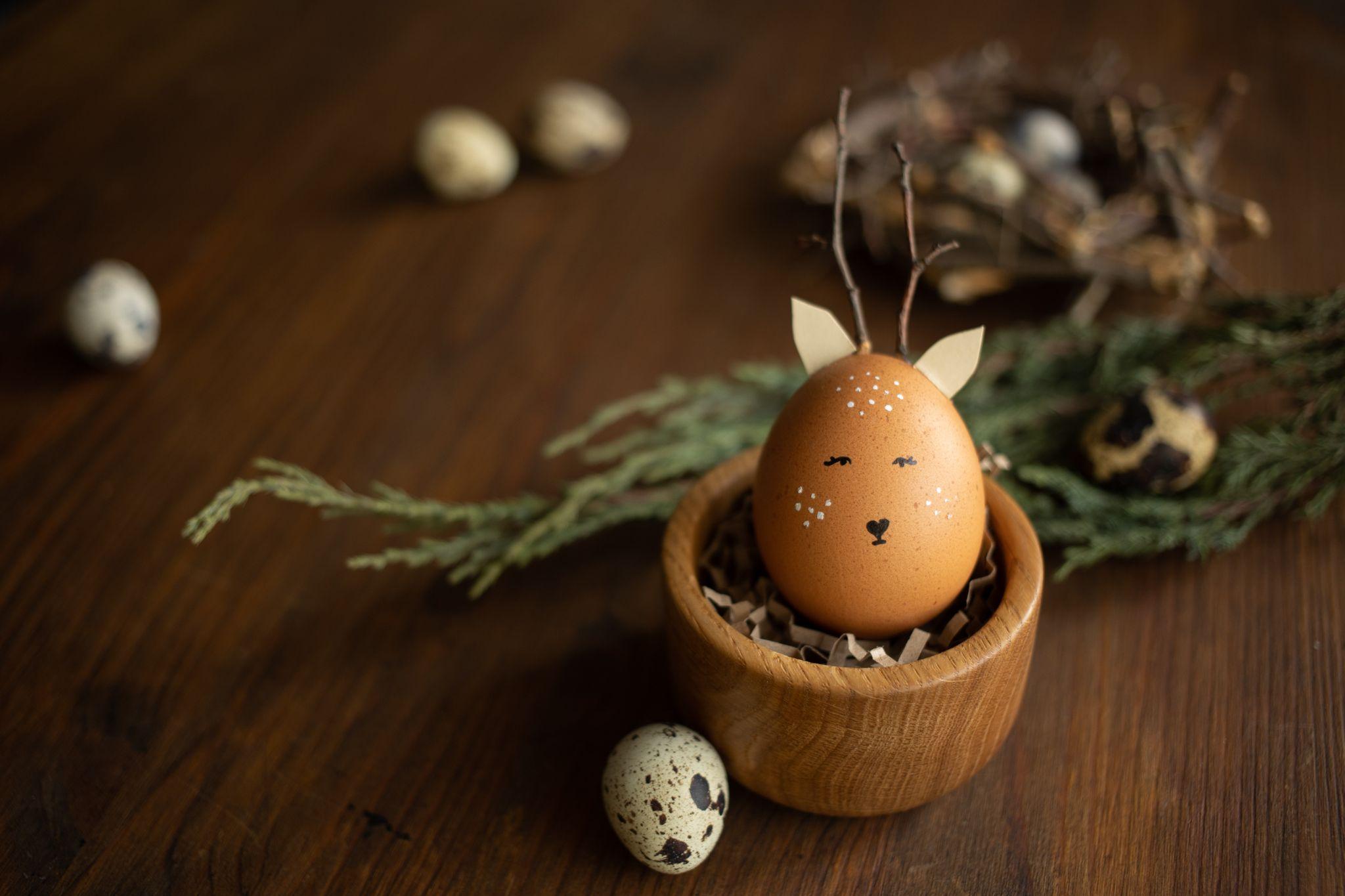
Credit: Pexels
Method To Prepare The Eggshells: Start by rinsing the eggshells in warm water. Then, using a sharp knife, carefully remove any remaining bits of egg from the shells. Next, place the shells in a baking dish and bake them at 200 degrees Fahrenheit for about 20 minutes. This will help to kill any bacteria that may be present.
Once the eggshells have cooled, crush them into small pieces. You can do this by hand or use a food processor. The smaller the pieces, the better. Eggshells can then be added to indoor plants in several ways.
- One option is to mix the crushed eggshells into the potting soil before planting. This will help to improve drainage and aeration.
- Another option is to top dress plants by sprinkling eggshells around the base of the plant. This can help to deter slugs and other pests.
- Finally, eggshells can be used to make a simple fertilizer. To do this, steep the shells in water for about a week. Then, strain the water and use it to water your plants. This will provide them with an extra boost of calcium.
The Best Way To Dispose Of Eggshells After Using With Indoor Plants
The best way to dispose of eggshells after using them with indoor plants is to compost them. You can do this by placing the eggshells in a compost bin or pile.
Eggshells take a long time to decompose, so be patient. Once they have decomposed, you can add them to your indoor plants as a natural fertilizer.
Expert Ideas
-Use eggshells as a drainage layer when potting plants.
-Crush eggshells and use them as a natural fertilizer.
-Make eggshell plant markers to keep track of your plants.
-Use eggshells to start seedlings indoors.
Bonus Tip
Eggshells can be used as a natural fertilizer for indoor plants as well. Just crush them up and sprinkle them around the base of the plant.
Frequently Asked Questions
1. Can I put eggshells directly on indoor plants?
Yes, you can put eggshells directly on indoor plants. Just make sure to clean them first and crush them into small pieces.
2. Will eggshells help my indoor plants grow?
Yes, eggshells can help your indoor plants grow. They contain calcium, which is essential for plant growth.
3. How do I prepare eggshells for indoor plants?
You can prepare eggshells for indoor plants by crushing them up and mixing them with water. Eggshells can also be used whole.
4. How often should I put eggshells on my indoor plants?
You can put eggshells on your indoor plants every few weeks. Just make sure not to overdo it, as too much calcium can be harmful to plants.
5. Do I need to remove the eggshells after a while?
No, you don’t need to remove the eggshells after a while. They will eventually decompose and add nutrients to the soil.
6. Are there any other benefits to using eggshells on indoor plants?
Yes, there are other benefits to using eggshells on indoor plants. Eggshells can help deter pests and keep your plants healthy.
7. Are there any drawbacks to using eggshells for indoor plants?
The only drawback to using eggshells for indoor plants is that they can be a bit messy. Eggshells can also attract pests if they are not cleaned properly.
Conclusion
If you’re looking for a way to give your indoor plants a little boost, using eggshells is a great option! Eggshells are packed with nutrients that plants need, and they can help improve drainage and aeration in potting soil. Plus, they’re free and easy to come by! Just make sure to clean and dry the eggshells before using them.
Michelle Wilde
Related posts
![]()
About Michelle Wilde
Michelle Wilde is a stay-at-home mom and avid plant lover. Armed with a post-graduate degree in Computer Science (no kidding!), she loves researching plants and landscapes. When she is not caring for her 4 kids, she spends time on her passion for plants. She blogs at www.indoorplantschannel.com, the trusted source for indoor plants.
Learn more
Subscribe
* You will receive the latest posts and updates about indoor plants!
Search
Recent Posts
Categories
- Beginner Guides (10)
- FAQ (206)
- General (2)
- How-To Guides (212)
- Indoor Plants (214)
- Pest Management (2)
- Plant Problem Solutions (4)
- Seasonal Growing (2)
- Specialized Environments (2)
- Specific Plant Care (3)
- Technical Growing (2)
